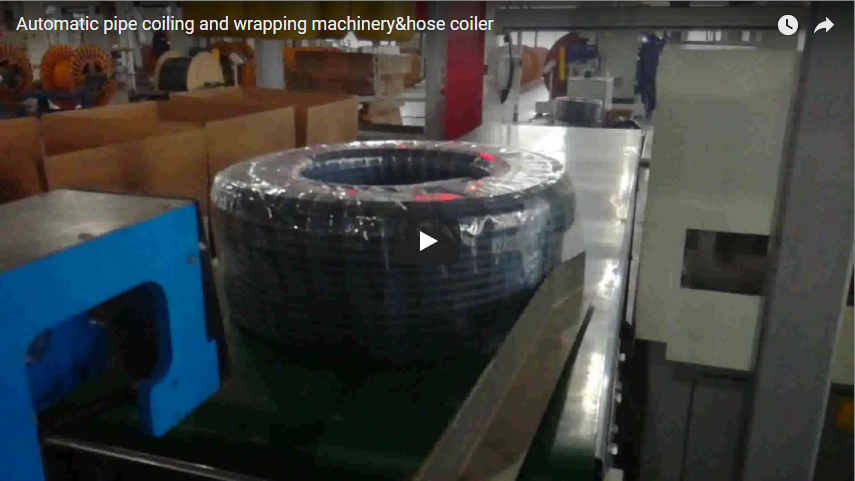Enhancing Heavy-Duty Packaging Lines with Online Automatic Steel Strapping Machines
In demanding industrial environments, particularly within the metals, lumber, and construction materials sectors, ensuring load stability and integrity during transit and storage is non-negotiable. The online automatic steel strapping machine represents a critical advancement in packaging automation, delivering robust, reliable, and efficient securement for heavy or dimensionally challenging products.
Integrating directly into production or conveyor lines ("online"), these automated systems streamline the application of high-tensile steel straps, significantly optimizing packaging throughput and reducing manual intervention in often hazardous tasks.
Core Technology and Operational Principles
Online automatic steel strappers employ sophisticated electro-mechanical systems governed by Programmable Logic Controllers (PLCs). The typical strapping cycle involves several precision stages:
- Strap Feeding: Automatically guides the steel strap around the product or bundle.
- Tensioning: Applies consistent, predetermined tension to the strap, crucial for load stability. Advanced systems offer variable tension control, adaptable to different product requirements. Research indicates that improper tensioning is a primary cause of load failure, making automated consistency vital (Source: Packaging Industry Research Reports).
- Sealing: Creates a secure joint. Common methods include:
- Notch (Seal) Joints: Uses a separate metal seal crimped onto the overlapping strap ends. Patented seal designs often focus on maximizing joint efficiency and minimizing seal slippage under load (Ref: USPTO database searches on "steel strap sealing").
- Seal-less Joints (Friction-Weld): Vibrates strap ends together under pressure, creating a strong bond through friction heat. This eliminates the need for seals, reducing consumable costs and potential failure points. Studies in materials science highlight the microstructural integrity achievable with optimized friction-weld parameters.
- Cutting: Neatly shears the strap after sealing.
Key Performance Indicators and Technical Specifications
Modern online automatic steel strapping machines are engineered for high performance and reliability. Typical specifications include:
- Strapping Speed: Ranges from 10 to 30+ seconds per cycle, depending on arch size and product complexity.
- Tension Range: Widely adjustable, often from 2,000 N up to 20,000 N (approx. 450 - 4,500 lbf) or higher for specialized heavy-duty applications.
- Strap Compatibility: Designed for specific steel strap widths (e.g., 1/2", 5/8", 3/4", 1-1/4") and gauges (thicknesses).
- Sealing Method: Notch seal or Seal-less (Friction-Weld).
- Control System: PLC-based with HMI (Human-Machine Interface) for parameter setting, diagnostics, and potential integration with plant-level control systems (MES/ERP).
- Power Requirements: Typically 480V/3Ph/60Hz or tailored to regional standards.
Advancements Driving Efficiency and Reliability
Continuous innovation focuses on enhancing the performance and integration capabilities of these machines:
- Improved Sealing Technologies: Research presented in journals like Packaging Technology and Science often explores optimizations in friction-weld parameters (frequency, amplitude, time) to maximize joint strength and energy efficiency.
- Sensor Integration & IIoT: Modern machines incorporate sensors for strap presence, correct feeding, tension monitoring, and predictive maintenance alerts (e.g., wear on tensioning wheels or cutters). Integration with Industrial Internet of Things (IIoT) platforms allows for remote monitoring, data logging, and enhanced troubleshooting, aligning with Industry 4.0 principles discussed frequently in publications like Automation World.
- Enhanced Safety Features: Interlocked guarding, E-stops, and controlled access meet stringent industrial safety standards (e.g., OSHA, CE).
Tangible Benefits for Packaging Operations
Implementing online automatic steel strapping yields significant advantages:
- Increased Throughput and Labor Optimization: Automation drastically reduces the time and manual labor required per package compared to manual or semi-automatic methods. Industry case studies often report throughput increases exceeding 50% and reallocation of 1-2 operators per shift.
- Superior Load Security and Product Protection: Steel strapping offers high tensile strength and minimal elongation, essential for heavy, rigid, or sharp-edged loads. The consistent tension and precise placement provided by automated systems minimize load shifting and product damage during handling and transit, directly impacting bottom-line costs associated with returns or rework.
- Operational Consistency and Quality Control: Automated systems eliminate operator variability in tensioning and sealing, ensuring every strap application meets predefined quality standards. This consistency is crucial for meeting customer specifications and maintaining brand reputation. Integrated diagnostics help maintain optimal performance.
- Robustness for Demanding Environments: Constructed with heavy-gauge steel frames and components designed to resist wear, dust, and vibration, these machines offer high uptime and reliability in challenging industrial settings like steel mills, lumber yards, and brick plants.
Applications Across Key Industries
Online automatic steel strapping is indispensable in sectors handling bulk or heavy goods:
- Metals Industry: Securing steel coils, aluminum billets, bundles of pipe, and structural steel.
- Building Materials: Strapping bundles of lumber, bricks, concrete blocks, and roofing materials.
- Heavy Machinery & Components: Unitizing large parts or securing equipment onto pallets or skids.
- General Manufacturing: Palletizing heavy goods where high strap tension is required.
Conclusion: A Strategic Investment in Packaging Efficiency
The online automatic steel strapping machine is more than just packaging equipment; it's a strategic investment in operational efficiency, load security, and workplace safety. By leveraging automation, advanced sealing technologies, and robust design, these systems provide a reliable and cost-effective solution for securing high-value or heavy products, ensuring they reach their destination intact within increasingly demanding supply chains. Their integration capabilities further position them as key components in modern, automated end-of-line packaging operations.






